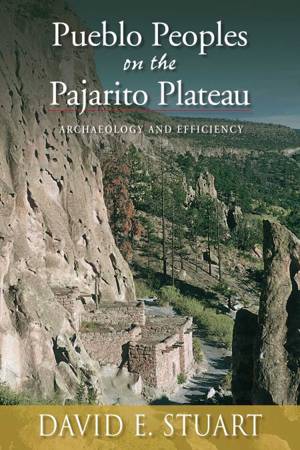
- Afhalen na 1 uur in een winkel met voorraad
- Gratis thuislevering in België vanaf € 30
- Ruim aanbod met 7 miljoen producten
- Afhalen na 1 uur in een winkel met voorraad
- Gratis thuislevering in België vanaf € 30
- Ruim aanbod met 7 miljoen producten
Zoeken
Pueblo Peoples on the Pajarito Plateau E-BOOK
Archaeology and Efficiency
David E. Stuart
E-book | Engels
€ 20,12
+ 20 punten
Uitvoering
Omschrijving
This lively overview of the archaeology of northern New Mexico's Pajarito Plateau argues that Bandelier National Monument and the Pajarito Plateau became the Southwest's most densely populated and important upland ecological preserve when the great regional society centered on Chaco Canyon collapsed in the twelfth century. Some of Chaco's survivors moved southeast to the then thinly populated Pajarito Plateau, where they were able to survive by fundamentally refashioning their society. David E. Stuart, an anthropologist/archaeologist known for his stimulating overviews of prehistoric settlement and subsistence data, argues here that this re-creation of ancestral Puebloan society required a fundamental rebalancing of the Chacoan model. Where Chaco was based on growth, grandeur, and stratification, the socioeconomic structure of Bandelier was characterized by efficiency, moderation, and practicality.
Although Stuart's focus is on the archaeology of Bandelier and the surrounding area, his attention to events that predate those sites by several centuries and at substantial distances from the modern monument is instructive. Beginning with Paleo-Indian hunter-gatherers and ending with the large villages and great craftsmen of the mid-sixteenth century, Stuart presents Bandelier as a society that, in crisis, relearned from its pre-Chacoan predecessors how to survive through creative efficiencies. Illustrated with previously unpublished maps supported by the most recent survey data, this book is indispensable for anyone interested in southwestern archaeology.
Although Stuart's focus is on the archaeology of Bandelier and the surrounding area, his attention to events that predate those sites by several centuries and at substantial distances from the modern monument is instructive. Beginning with Paleo-Indian hunter-gatherers and ending with the large villages and great craftsmen of the mid-sixteenth century, Stuart presents Bandelier as a society that, in crisis, relearned from its pre-Chacoan predecessors how to survive through creative efficiencies. Illustrated with previously unpublished maps supported by the most recent survey data, this book is indispensable for anyone interested in southwestern archaeology.
Specificaties
Betrokkenen
- Auteur(s):
- Uitgeverij:
Inhoud
- Aantal bladzijden:
- 168
- Taal:
- Engels
Eigenschappen
- Productcode (EAN):
- 9780826349125
- Verschijningsdatum:
- 15/02/2011
- Uitvoering:
- E-book
- Beveiligd met:
- Adobe DRM
- Formaat:
- ePub

Alleen bij Standaard Boekhandel
+ 20 punten op je klantenkaart van Standaard Boekhandel
Beoordelingen
We publiceren alleen reviews die voldoen aan de voorwaarden voor reviews. Bekijk onze voorwaarden voor reviews.








